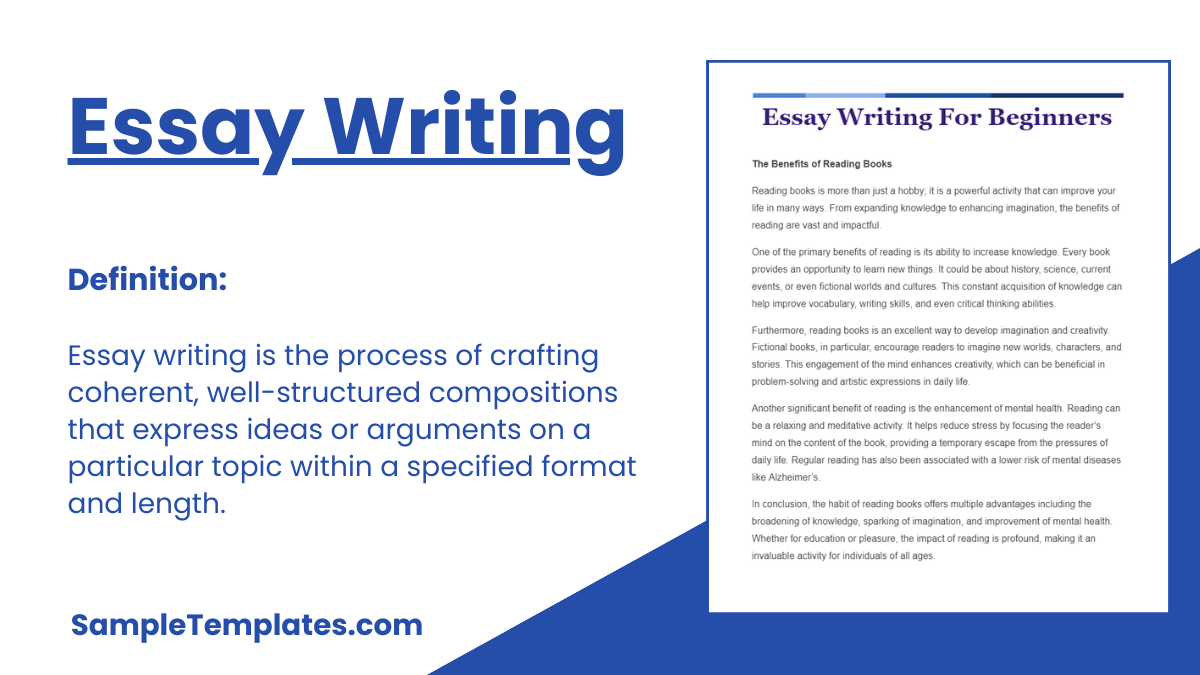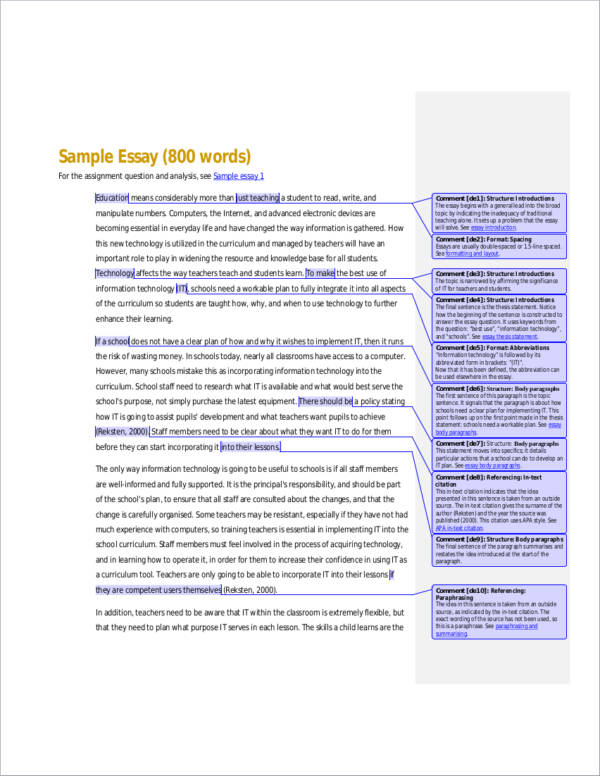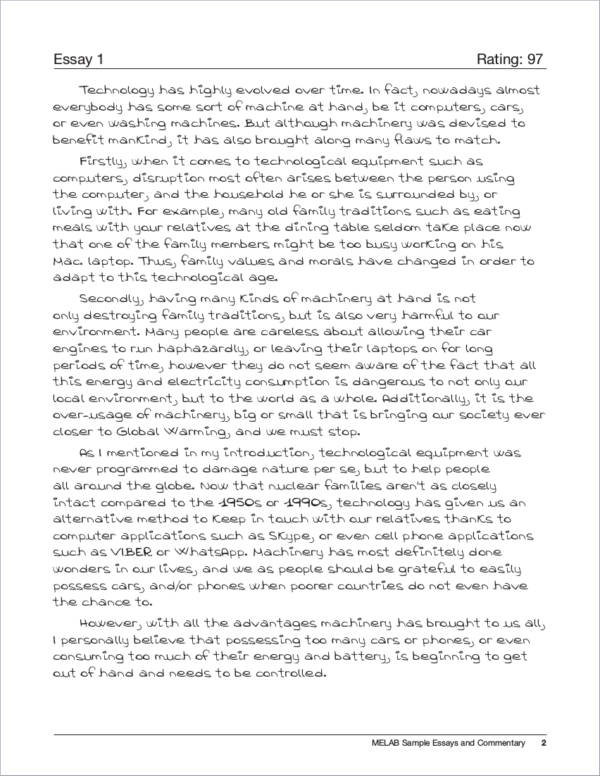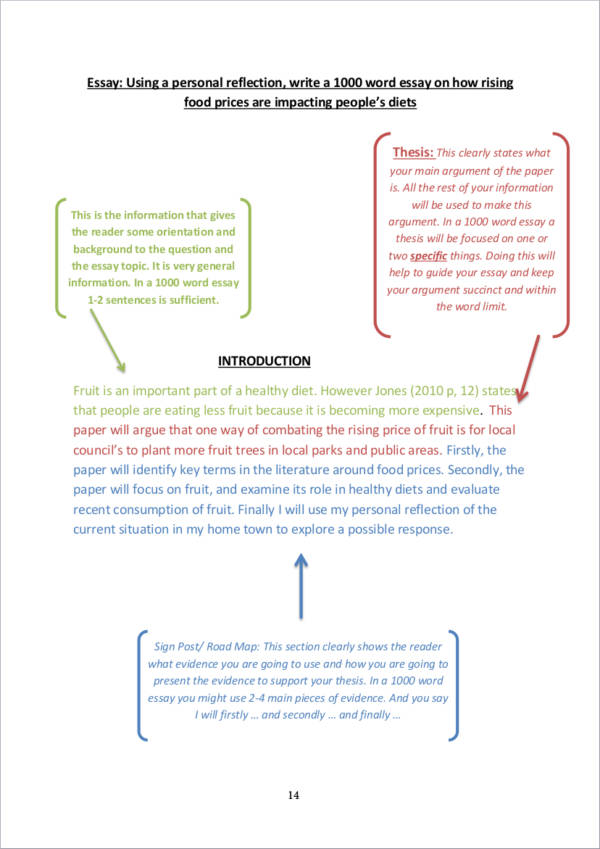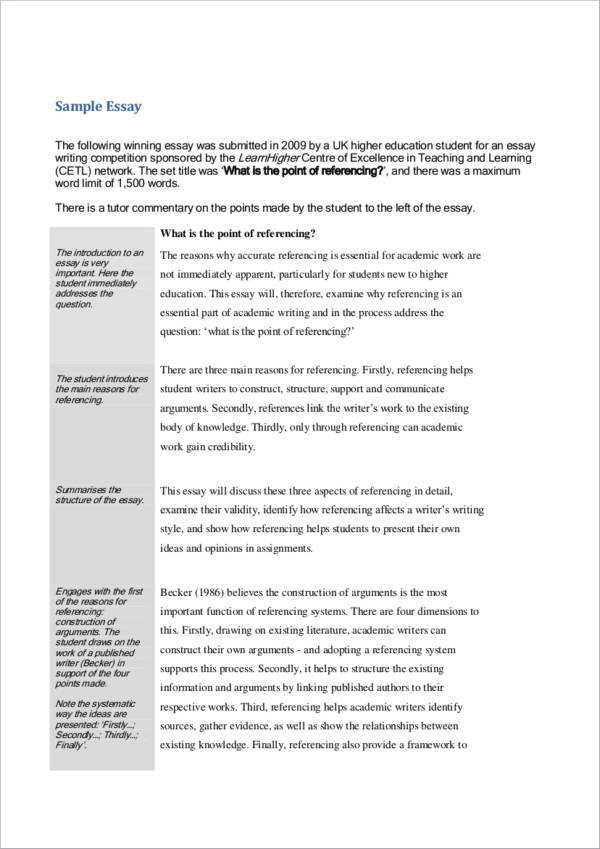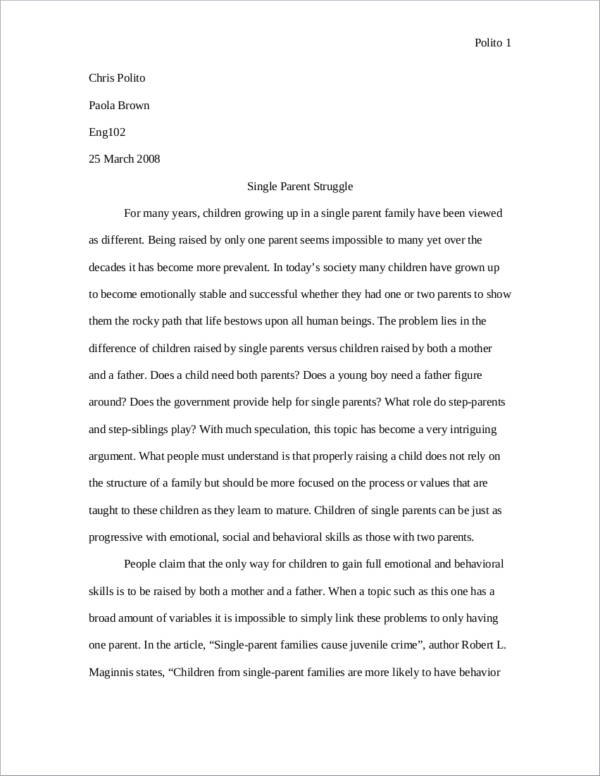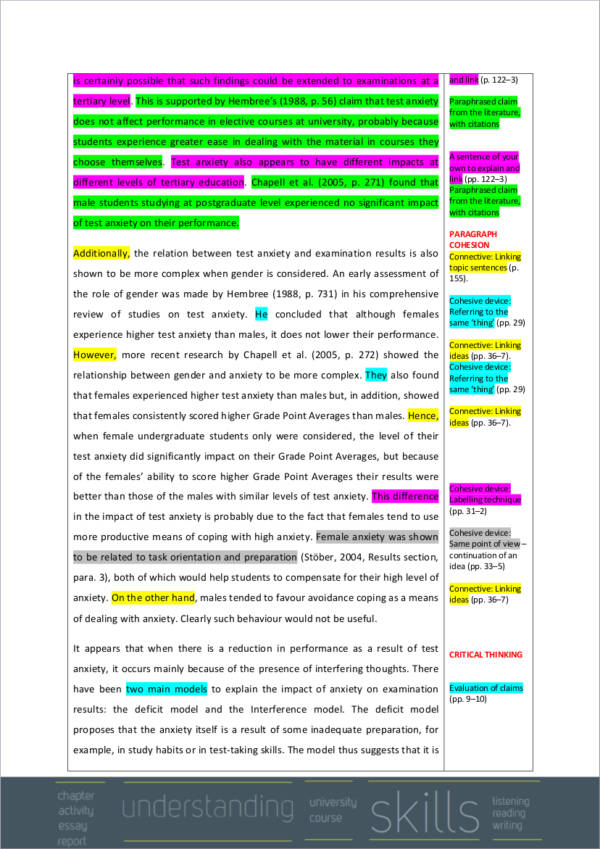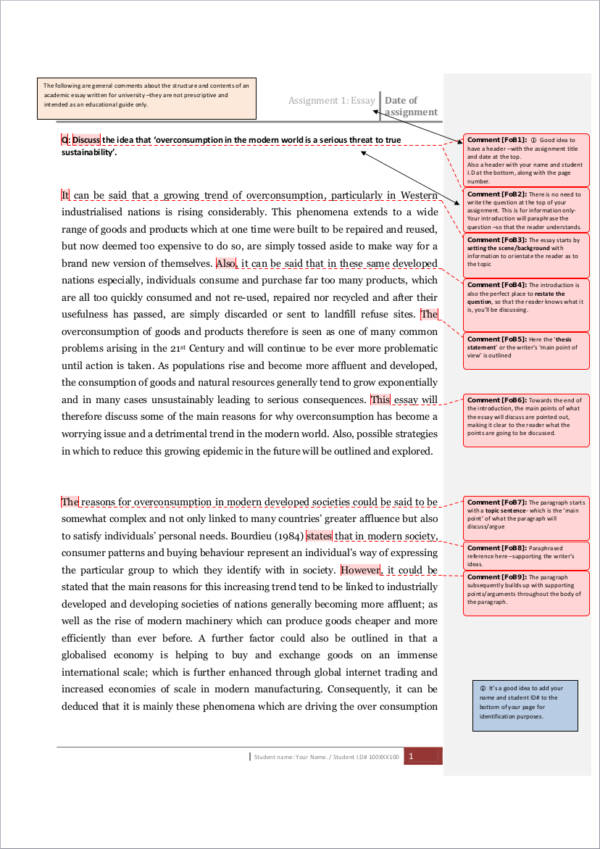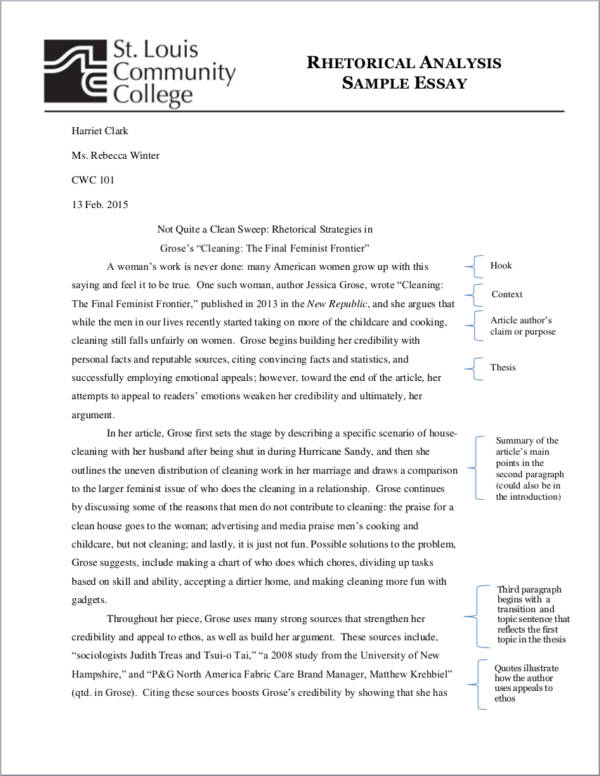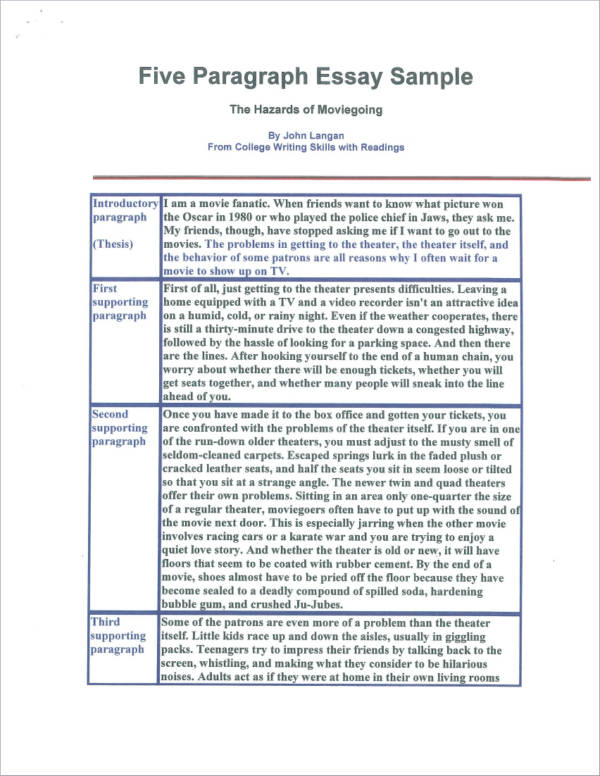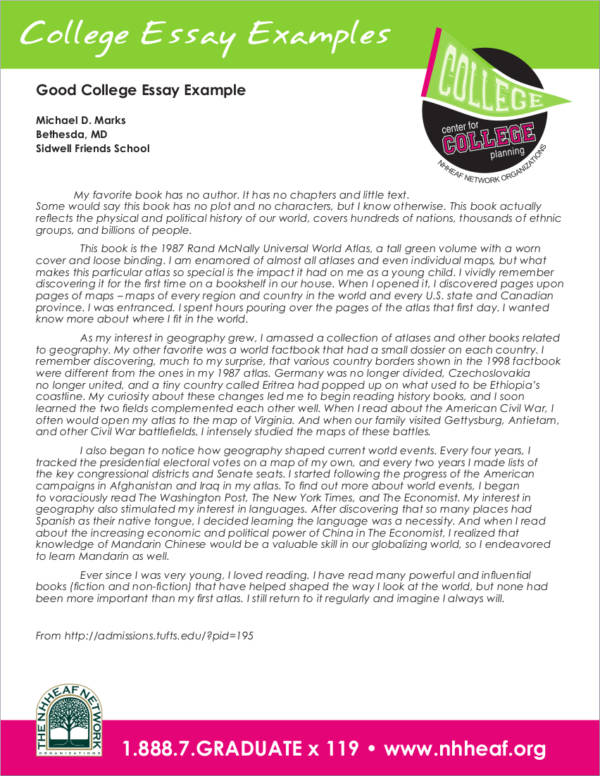Remember having to write an essay about a particular topic because it is part of your school requirements? It wasn’t easy. Imagine having to write about something with a lot of words in it that should make sense and should be coherent with each other, like schools essays and academic essays. That’s pretty tough, that is why essay writing is not liked by many.
Up to this day, essay writing is still part and will remain a part of the requirements in school, regardless if it is in primary school, high school, or college. In this article are essay samples for essay writing that you can use as a reference or as a learning material for your essay writing project or for your personal essay. These samples are available for free download. Check them out below.
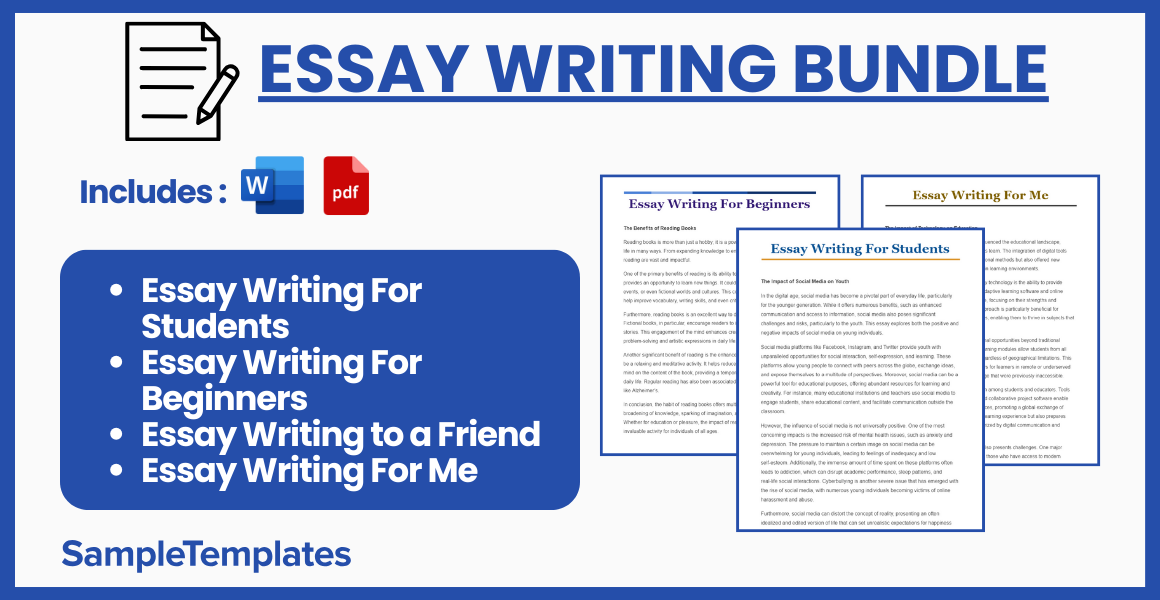
Essay Writing For Students
The Impact of Social Media on Youth
In the digital age, social media has become a pivotal part of everyday life, particularly for the younger generation. While it offers numerous benefits, such as enhanced communication and access to information, social media also poses significant challenges and risks, particularly to the youth. This essay explores both the positive and negative impacts of social media on young individuals.
Social media platforms like Facebook, Instagram, and Twitter provide youth with unparalleled opportunities for social interaction, self-expression, and learning. These platforms allow young people to connect with peers across the globe, exchange ideas, and expose themselves to a multitude of perspectives. Moreover, social media can be a powerful tool for educational purposes, offering abundant resources for learning and creativity. For instance, many educational institutions and teachers use social media to engage students, share educational content, and facilitate communication outside the classroom.
However, the influence of social media is not universally positive. One of the most concerning impacts is the increased risk of mental health issues, such as anxiety and depression. The pressure to maintain a certain image on social media can be overwhelming for young individuals, leading to feelings of inadequacy and low self-esteem. Additionally, the immense amount of time spent on these platforms often leads to addiction, which can disrupt academic performance, sleep patterns, and real-life social interactions. Cyberbullying is another severe issue that has emerged with the rise of social media, with numerous young individuals becoming victims of online harassment and abuse.
Furthermore, social media can distort the concept of reality, presenting an often idealized and edited version of life that can set unrealistic expectations for happiness and success. This skewed perception can affect young people’s self-image and aspirations, influencing their overall satisfaction with life and sometimes leading to detrimental behavioral patterns.
In conclusion, social media indeed shapes the social and psychological development of youth in profound ways. While it can enhance communication and learning, it also presents significant risks that cannot be overlooked. It is crucial for parents, educators, and policymakers to monitor and mitigate the negative effects while enhancing the positive impacts of social media on young lives. Encouraging responsible and informed usage of these platforms is essential to ensure that social media remains a tool for positive change rather than a source of distress.
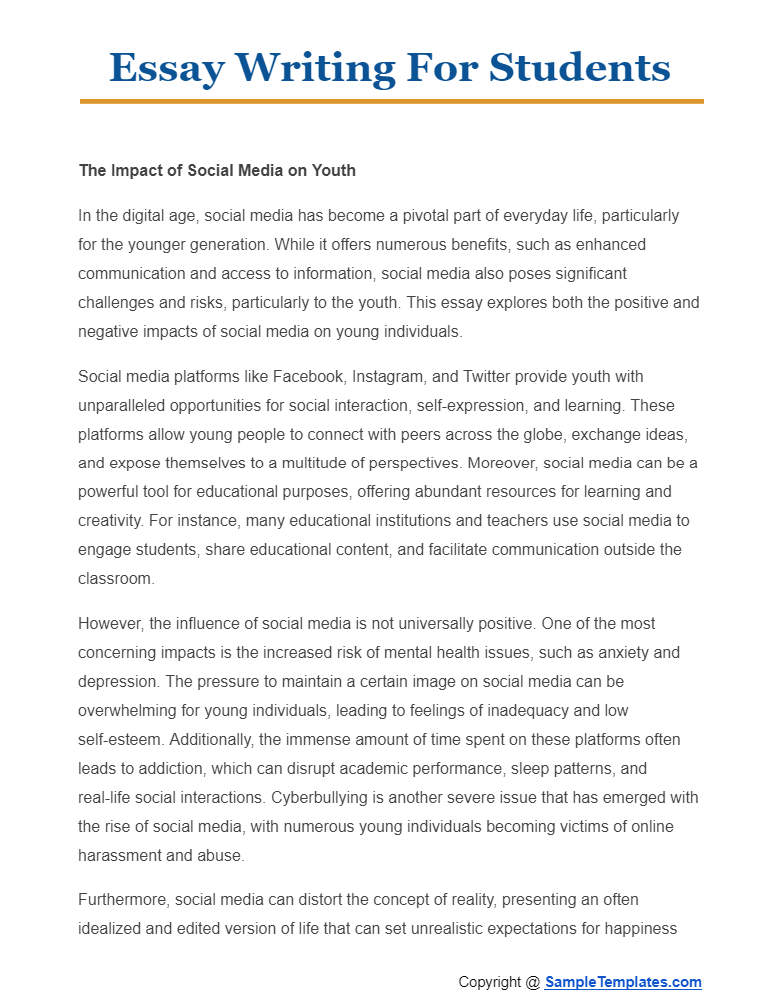
Essay Writing For Beginners
The Benefits of Reading Books
Reading books is more than just a hobby; it is a powerful activity that can improve your life in many ways. From expanding knowledge to enhancing imagination, the benefits of reading are vast and impactful.
One of the primary benefits of reading is its ability to increase knowledge. Every book provides an opportunity to learn new things. It could be about history, science, current events, or even fictional worlds and cultures. This constant acquisition of knowledge can help improve vocabulary, writing skills, and even critical thinking abilities.
Furthermore, reading books is an excellent way to develop imagination and creativity. Fictional books, in particular, encourage readers to imagine new worlds, characters, and stories. This engagement of the mind enhances creativity, which can be beneficial in problem-solving and artistic expressions in daily life.
Another significant benefit of reading is the enhancement of mental health. Reading can be a relaxing and meditative activity. It helps reduce stress by focusing the reader’s mind on the content of the book, providing a temporary escape from the pressures of daily life. Regular reading has also been associated with a lower risk of mental diseases like Alzheimer’s.
In conclusion, the habit of reading books offers multiple advantages including the broadening of knowledge, sparking of imagination, and improvement of mental health. Whether for education or pleasure, the impact of reading is profound, making it an invaluable activity for individuals of all ages.
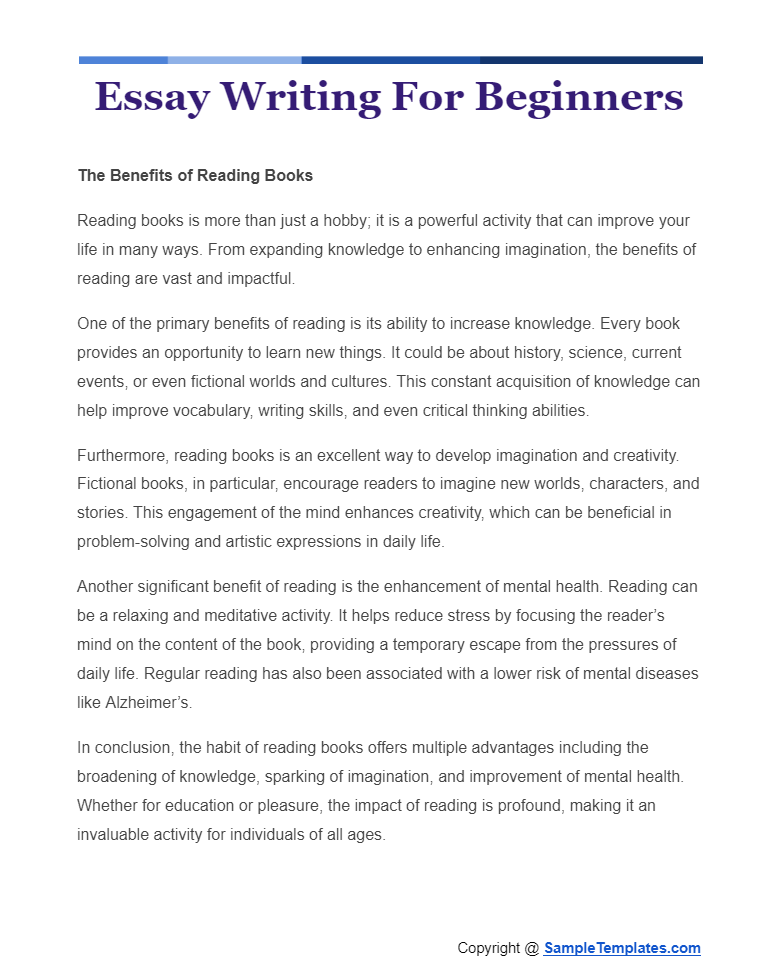
Essay Writing to a Friend
Dear [Friend’s Name],
I hope this message finds you well. I’ve been thinking a lot about how we used to spend our afternoons trying out every craft kit we could find and how much joy that brought us. It’s funny how life gets busier, and we often set aside those little hobbies that brought us such happiness. Recently, I’ve rediscovered one of those past hobbies: painting, and I wanted to share how this rediscovery has been a delightful surprise that brought more joy into my life than I expected.
Getting back into painting started almost by accident. One evening, feeling particularly overwhelmed by the usual bustle of life, I stumbled upon some old watercolors in my desk drawer. Remembering the peace and satisfaction I felt in our painting days, I decided to give it another try. It was awkward at first, like greeting a friend you haven’t seen in years, but soon the familiarity returned, and so did the excitement.
Painting has allowed me to express myself in colors and strokes, away from the pressures of daily responsibilities. Each brushstroke eases my mind, and watching a blank canvas slowly transform into something beautiful is incredibly fulfilling. It’s not just the act of painting that I find enriching but also the process of planning and envisioning what each piece might become. It’s a creative process that requires me to be fully present, making it a perfect escape from the relentless pace of modern life.
Moreover, reconnecting with painting has also reconnected me with old friends like you, who share the same passion. It’s been a delightful journey to exchange photos of our artworks, discuss techniques, and even plan future projects together. This experience has taught me the importance of occasionally slowing down and embracing those simple joys that nourish the soul.
I strongly encourage you, my dear friend, to revisit some of those forgotten hobbies. Whether it’s crafting, photography, or something entirely new, I believe there’s unparalleled joy in rediscovering past passions. They have a unique way of brightening up everyday life and reminding us of who we are and what we love.
I look forward to hearing from you soon, perhaps about your own adventures in rekindling old flames. Until then, take care and let your creativity flow!
Warm regards,
[Your Name]
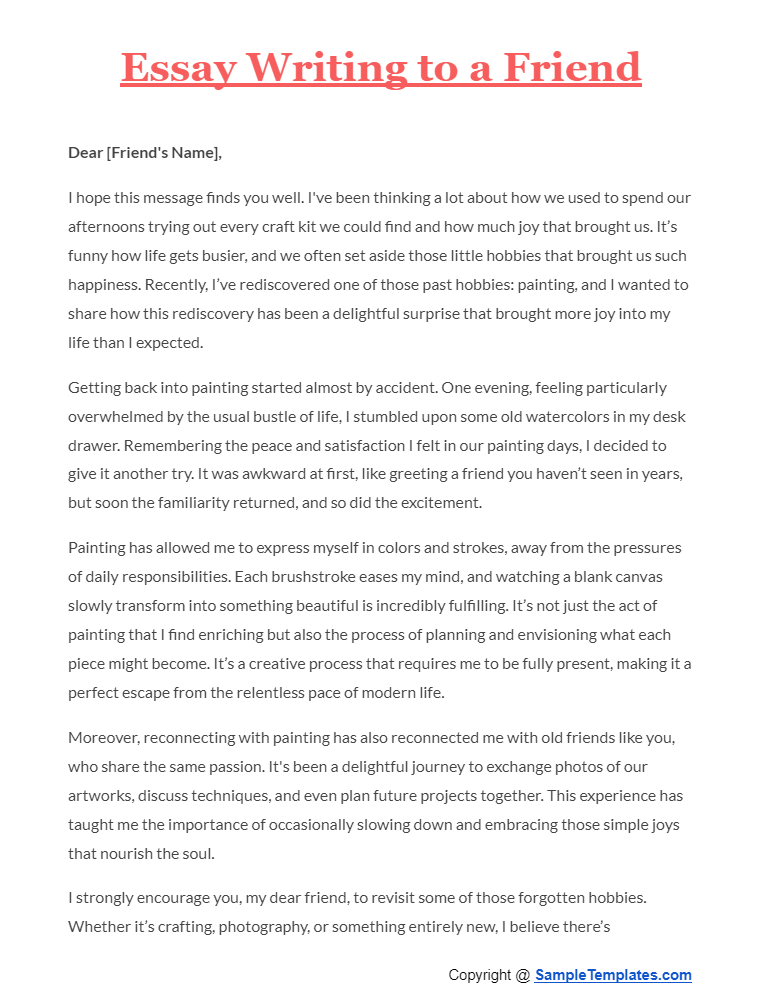
Essay Writing For Me
The Impact of Technology on Education
In recent years, technology has profoundly influenced the educational landscape, reshaping the way teachers teach and students learn. The integration of digital tools and resources has not only enhanced instructional methods but also offered new possibilities for collaboration and accessibility in learning environments.
One of the most significant changes brought by technology is the ability to provide personalized learning experiences. Through adaptive learning software and online platforms, students can learn at their own pace, focusing on their strengths and addressing their weaknesses. This tailored approach is particularly beneficial for students with diverse learning needs and styles, enabling them to thrive in subjects that might otherwise present challenges.
Moreover, technology has expanded educational opportunities beyond traditional classroom boundaries. Online courses and learning modules allow students from all over the world to access quality education, regardless of geographical limitations. This democratization of education has opened doors for learners in remote or underserved regions, offering them resources and knowledge that were previously inaccessible.
Additionally, technology facilitates collaboration among students and educators. Tools such as video conferencing, online forums, and collaborative project software enable communication and cooperation across distances, promoting a global exchange of ideas. This connectivity not only enriches the learning experience but also prepares students for a workforce increasingly characterized by digital communication and teamwork.
However, the rise of technology in education also presents challenges. One major concern is the digital divide—the gap between those who have access to modern information and communication technology and those who do not. This disparity can hinder the effectiveness of educational reforms intended to increase equity through technology. Therefore, it is crucial for policy makers and educational leaders to work towards more inclusive digital access.
In conclusion, the impact of technology on education is profound and multifaceted, offering numerous benefits in terms of personalization, accessibility, and global connectivity. However, it also necessitates careful consideration of issues like the digital divide. With thoughtful integration and equitable access, technology can continue to transform education, making learning more engaging and inclusive for students around the world.
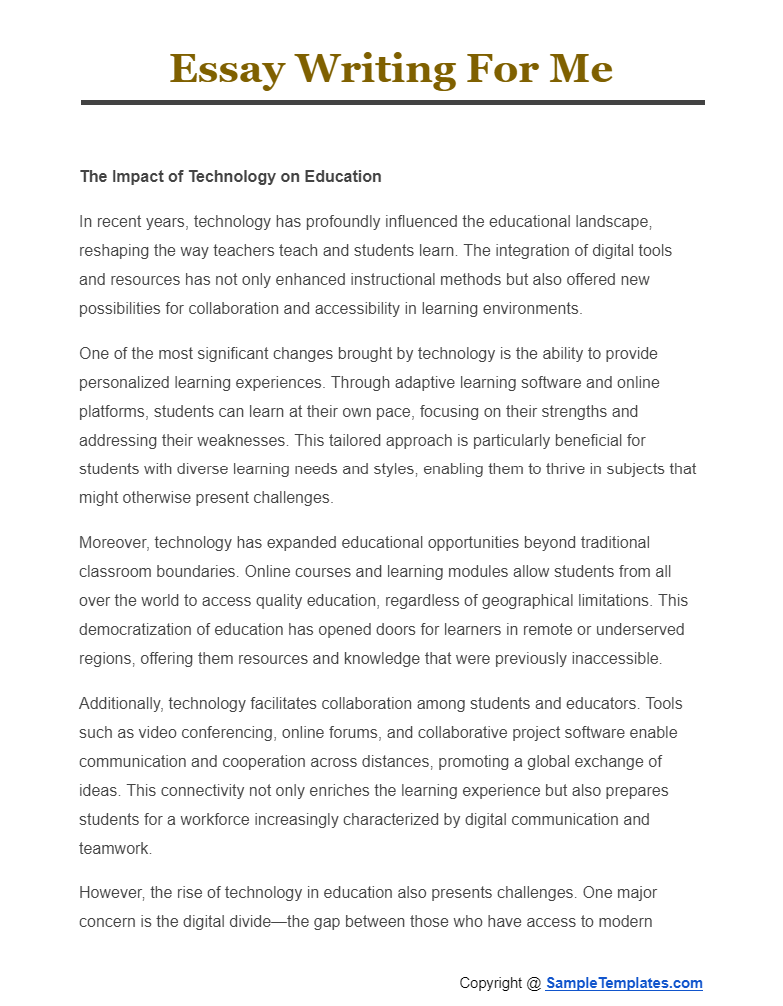
Browse More Templates On Essay Writing
Argumentative Essay Writing Middle School Template
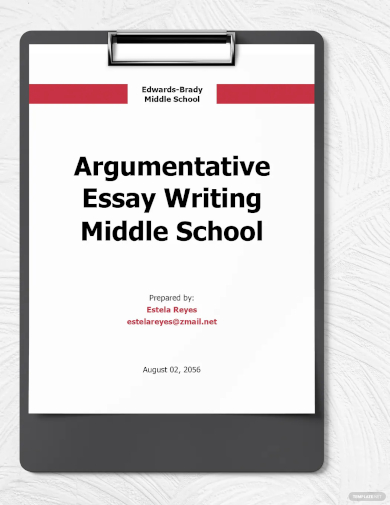
Argumentative Essay Writing Template
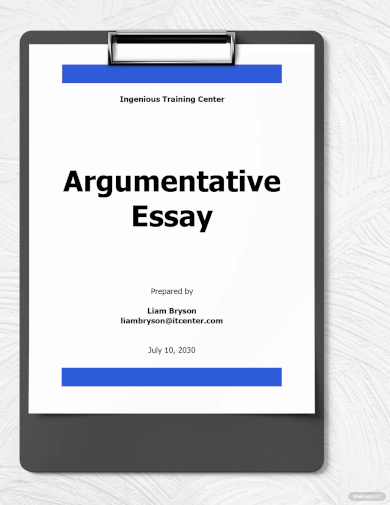
Free Essay Writing Plan Template
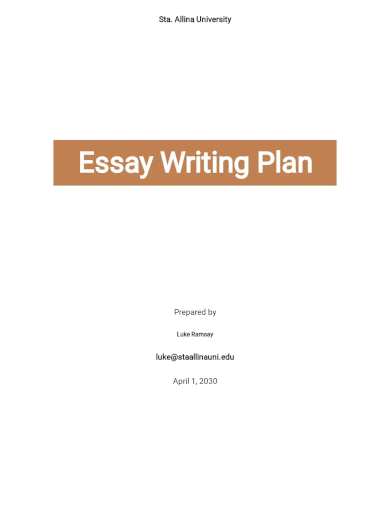
5-Paragraph Essay Writing Template

Character Analysis Writing Essay Outline Template
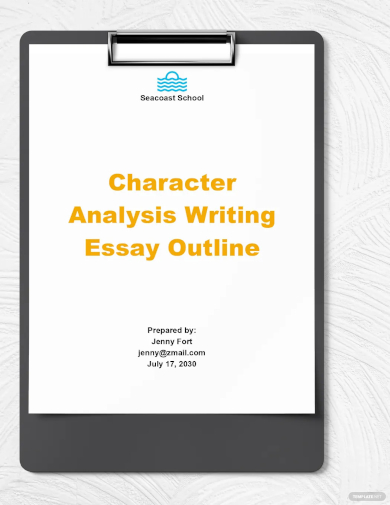
Essay Prewriting Outline Template

Sample 800-Word Essay with Notes Template
Essay Samples with Commentary Template
Academic Essay Writing Template
Essay about Referencing with Tutor Commentary Template
Sample Student Essays Template
Argumentative Essay Template
What Is Meant by an Essay?
At first glance, essays would usually look like an article, news, short story, or some other form of writing. Without reading or minding what it is, we tend to see it as another piece of writing. An essay is referred to as a piece of writing where the author or the writer puts in writing their arguments or beliefs about a specific topic. This is what sets them apart from other sample forms of writing. Essays are not only used to give an author’s argument about something, it is also commonly used in writing criticisms about literature, and making observations and reflections about the author’s daily life.
Essays are used in the school setting during exams as one of the ways to measure what the students have learned. The way the students write and the content of their essays determines what they have understood and learned so far. Essay writing is also one of the many requirements that students need to comply with in order to pass the subject or to complete their school projects. Some examples of essays are scholarship essays, student essays, and analysis essays.
Types of Essay
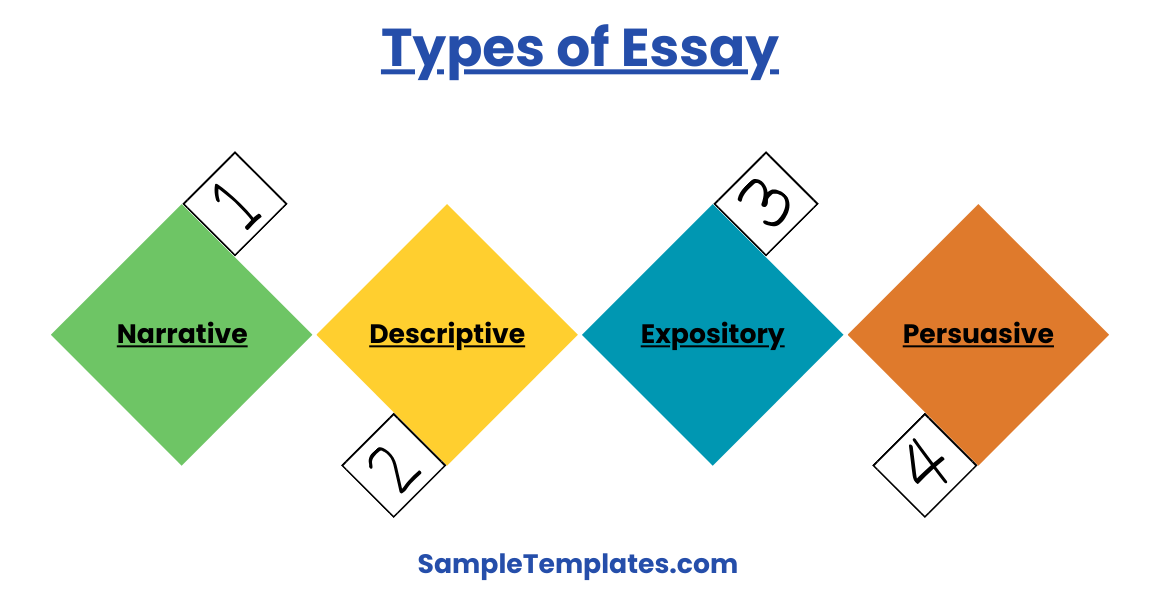
It is said that there are many different types of essays, perhaps a dozen, that are being used today, that is why we can easily get confused with it. Compared to learning about the dozen types of essays, there are actually four major types of essays that cover all the other types. This way you can manage to learn about them easily. The four major types of essays are narrative essays, descriptive essays, expository essays, and persuasive essays.
1. Narrative Essays
When we say narrative, the first thing that comes to our minds are stories. So writing a narrative essay means writing or telling a story. Writing or telling a story is no difficult feat as all of us tell some tale, usually on a daily basis. But what makes a narrative essay different from the storytelling that we are accustomed to is the fact that it should be made interesting and that it should have the capability to involve the reader in the story. Making the story interesting and involving the reader in it as much as possible can be done by writing as clearly and as vividly as possible. The challenge that student writers encounter when making an essay narrative is that it makes them think of things that they can write about themselves. Narrative essays are also written in the first person point of view. It could be their personal characteristics, likes and dislikes, or experiences that are based on real life.
2. Descriptive Essays
Descriptive essays are referred to as essays that paint a picture with the use of colorful words. We can describe a thing or a person the way we usually do, but in a descriptive essay, the description that one gives or writes about something relays a deeper meaning or a much more important interpretation. The words and description being used in a descriptive essay leaves an impression or appeals to the emotions of its readers or audiences.
3. Expository Essays
If the essay you are trying to make is all about facts, then an expository essay is what you need to write. An expository essay is written based only on facts so the personal emotions of the writer should not be shown or revealed in it. Also, when writing about facts, it should only be based on proven and tested sources, like statistics, the definition of the particular topic, and some examples. Under the expository essay type is the how-to type of writing—which provides a process on how to do a particular thing—the cause and effect type of writing, and the comparison and contract type of writing.
4. Persuasive Essays
The last major type of essay is the persuasive essay. In this type of essay, the writer aims to convince the reader or their audience to believe in what they are writing about. The writer’s goal in writing a persuasive essay is to convince the reader or their audience to accept their point of view regarding a particular thing. This is done with the use of facts, examples, logic, and different opinions from experts. It is important that all sides of the argument are presented and clearly communicated in the essay. This is what makes a persuasive essay effective.
University Essay Writing Template
Sample Essays for the TOEFL Writing Test Template
How do I write my own essay?
Sample Original Essay with Notes Template
Rhetorical Analysis Sample Essay Template
Tips For Writing an Essay
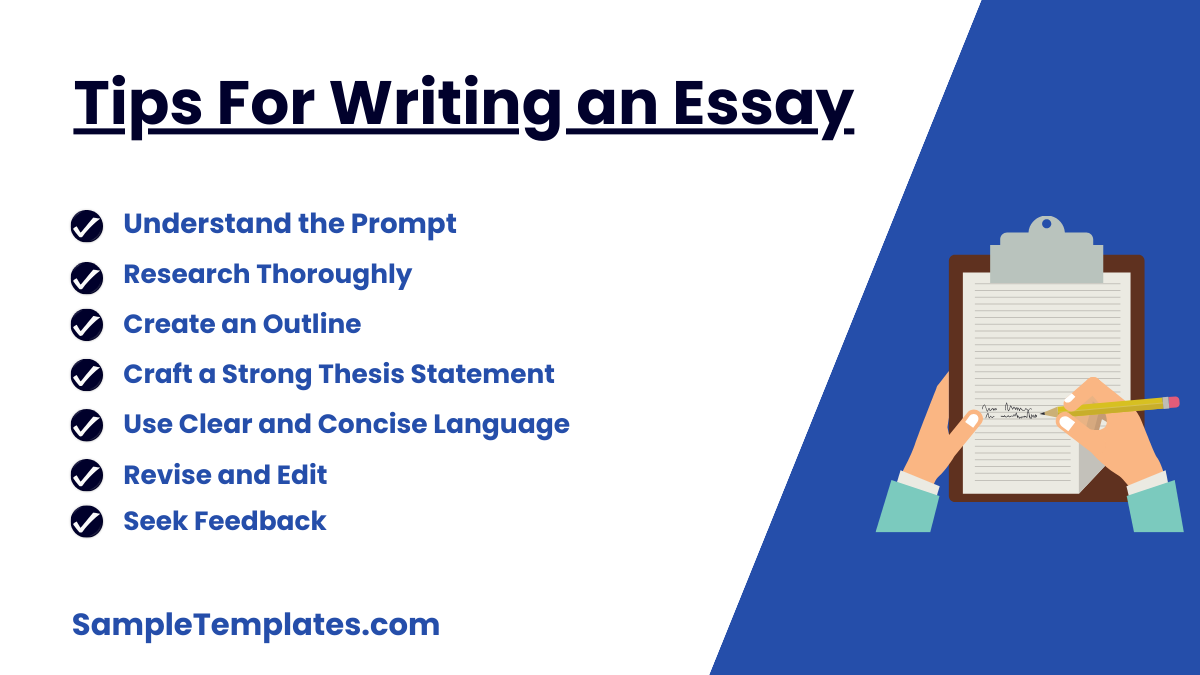
- Understand the Prompt: Before you begin writing, make sure you fully understand the essay prompt or question. Identify key words and phrases that dictate the style and content required, such as “analyze,” “compare,” or “discuss.”
- Research Thoroughly: Gather information from reliable sources to build a solid foundation for your essay. Use academic journals, books, and reputable websites to ensure your essay is informed and factual.
- Create an Outline: Plan the structure of your essay by creating an outline. This should include an introduction that introduces the topic and your thesis statement, body paragraphs that support your thesis with evidence and analysis, and a conclusion that summarizes your main points and restates the thesis in light of the evidence presented.
- Craft a Strong Thesis Statement: Your thesis statement in pdf should clearly express the main argument or point of your essay. It serves as the foundation upon which your essay is built, guiding the direction and focus of your writing.
- Use Clear and Concise Language: Write in a clear, concise manner, avoiding overly complex sentences or jargon that could confuse readers. Aim for clarity in your argumentation and coherence in your ideas.
- Incorporate Evidence and Analysis: Support your claims with evidence from your research, and analyze this evidence to explain how it supports your thesis. Be sure to properly cite your sources to avoid plagiarism.
- Revise and Edit: After completing your first draft, take the time to revise and refine your essay. Focus on improving the flow, clarity, and coherence of your writing, as well as correcting grammatical errors and typos.
- Seek Feedback: Don’t hesitate to seek feedback from peers, instructors, or writing centers. Constructive criticism can provide valuable insights into how to improve your essay before final submission.
By following these tips, you can enhance the quality of your essays, making them more persuasive, engaging, and well-researched.
Essay with Five Paragraphs Template
College Essay Example
Parts of an Essay
Just like there are different parts of a sample letter, there are also different parts of an essay. An essay consists of three main parts, regardless of what type of essay it is. The three main parts are the introduction, the body, and the conclusion.
1. Introduction
This part of an essay is where you write something about the topic, usually a brief argument about what the essay is all about or the topic of the essay. The introduction of an essay usually contains three or more sentences. Two sentences could be about the topic of the essay and the third sentence about the problem or issue to be discussed in the essay and what the writer is going to do about it. The introduction of an essay should be written in a way that would catch the interest of the readers or the target audience. This is because an interesting introduction will make the reader want to read the entire essay. You may also see personal essay examples.
Example:
“Money makes the world go round, and nowhere is this more true than in the workplace. Employers know that money is one of the best motivators. However, are bonuses or cash awards always the best way to reward employees? In this essay, I will look at some of the arguments for cash as a reward.” (writefix.com)
2. Body
This is the main part of the essay where the writer’s arguments and opinions are written and discussed in detail. The body of an essay is made up of paragraphs and should be made up of two to three or more paragraphs. It is important that the body of an essay is written in several paragraphs rather than one long block of paragraph because it will appear and seem difficult to read compared to short paragraphs. This is similar to writing the body of a letter, like that of application letters or thank-you letters. Each paragraph in the body of an essay should also contain at least five to seven sentences.
Example:
“People have several arguments against the need for degrees. They say that having so many graduates devalues a degree. People lose respect for the degree holder. It is also claimed that education has become a rat race, since graduates have to compete for jobs even after years of studying. Another point is that studying for such a long time leads to learners becoming inflexible. By that I mean that they know a lot about one narrow subject, but are unable to apply their skills assessment. Employers, on the other hand, prefer more flexible and adaptable workers.” (writefix.com)
3. Conclusion
As the essay draws to an end, the writer must make a proper closing for the essay. The conclusion is the end of an essay and the part where the writer officially closes the argument that they have discussed in the body of the essay. The contents of the conclusion are just the same as the introduction of the essay but written in a different way using a different set of words. The conclusion is usually made up of three or more sentences that summarize the whole essay. You may also like Essay Samples.
Example:
“The importance of each cause of the American Civil War can be debated, but what is fact is that there were several factors that led the South to secede. Slavery, states’ rights, and the election of Abraham Lincoln to the presidency—even though no state in the South voted for him—all contributed to the war. Even though it has been nearly 150 years since the Civil War ended, some of the leftover divide between North and South can still be seen.” (kibin.com)
FAQS
What are good questions to ask about essays?
When evaluating an essay, consider asking questions that assess its structure, content, and effectiveness. Are the thesis and main points clear? Is there sufficient evidence and analysis example?
How long is an essay?
The length of an essay can vary, but it typically ranges from 300 to 500 words for a standard essay, while longer essays or academic papers may exceed 1,000 words.
What does a good essay look like?
A good essay is well-organized, with a clear introduction, body paragraphs supported by evidence, and a conclusion that summarizes key points and reinforces the thesis, all written with clarity and coherence.
What type of test is essay?
An essay test is a type of sample assessment that requires the test taker to construct a response in the form of an essay, providing a written analysis or explanation.
How many paragraphs in an essay?
An essay typically consists of three main parts: an introduction, body paragraphs (usually three or more), and a conclusion. Each paragraph serves a specific purpose statement in conveying the overall message or argument.
How do you begin a essay?
Begin your essay with an engaging introduction that grabs the reader’s attention, provides context for your topic, and presents a clear thesis statement outlining the main argument or purpose of your essay.
Does essay have a title?
Yes, essays often have titles. A well-crafted title can provide a glimpse into the essay’s theme or focus, enticing readers to engage with the content.
In conclusion, essays serve as powerful tools for expression, exploration, and communication. Through carefully chosen words and structured arguments, they illuminate ideas, inspire reflection, and foster intellectual growth.
Related Posts
FREE 10+ Essay Introduction Samples in PDF
FREE 6+ Essay Organizer Samples in PDF | MS Word | Google Docs
FREE 10+ 5 Paragraph Essay Samples in PDF | MS Word | Apple Pages
FREE 10+ Argument Essay Samples in MS Word | Google Docs | PDF
FREE 10+ Research Essay Outline Samples in PDF | MS Word | Apple Pages
FREE 10+ Templates for Persuasive Essay Samples in PDF
FREE 10+ Essay Conclusion Samples in PDF
FREE 4+ MLA Format Essay Samples in PDF
FREE 10+ Leadership Essay Samples in MS Word | PDF
FREE 10+ Narrative Essay Outline Samples in PDF | MS Word | Google Docs
FREE 10+ APA Essay Samples in MS Word | Google Docs | PDF
FREE 10+ Research Paper Essay Samples in MS Word | Google Docs | PDF
FREE 8+ Sample Narrative Essay Templates in MS Word | PDF
FREE 10+ Community College Essay Samples [ Service, Builder, Transfer ]
FREE 10+ Admission Essay Samples [ College, Graduate, Nursing ]
